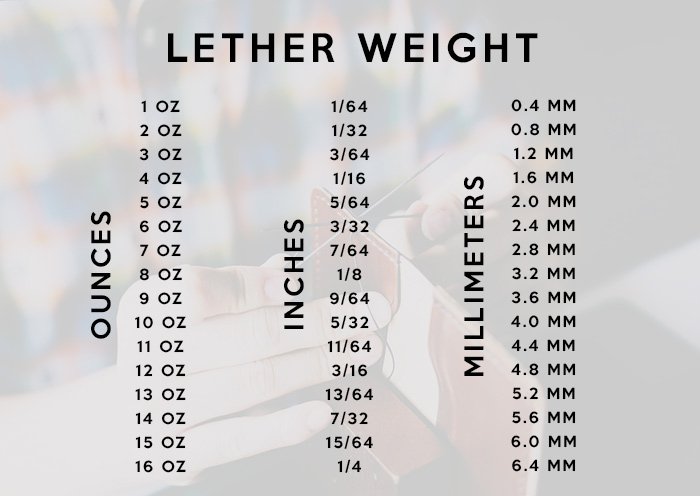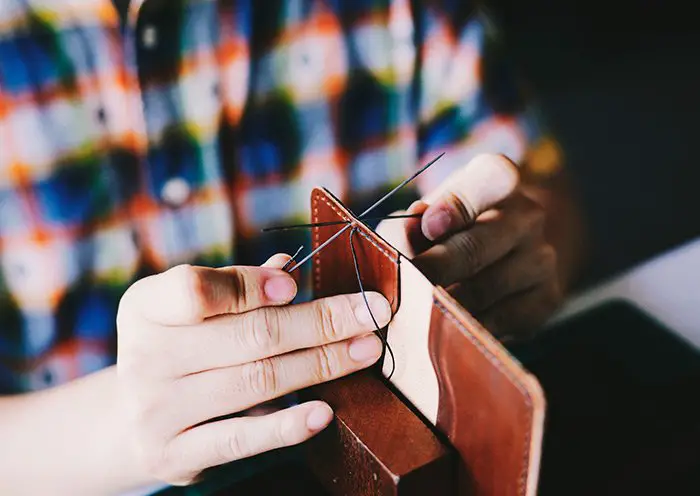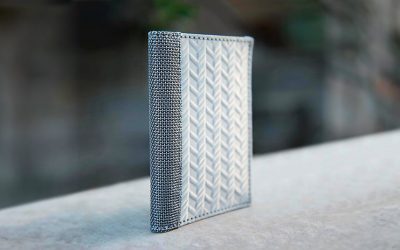How to Choose Leather Thickness
Leather Thickness Chart
When it comes to starting the process of making your own leather goods, you’ll need to traverse and understand some confusing aspects. One of the aspects I had the most issues with was understanding leather thickness and choosing the right leather thickness for any project. Whether you want to make a wallet, bag, or even saddle, the thickness of leather best for each leather good will change. This article will look into Leather Thickness and provide you with all the information for making the right informed decision for your leathercraft projects.
How Leather Thickness is Accurately Measured
Leather Thickness is always measured by ounces (sorry folks for Europe) which has been the staple since leathercraft began. One ounce is equal/ the equivalent to 0.4 mm (1/64 inch). The below chart is a handy reference to the various different leather weights available converted for ease.

Which leather Thickness should you use?
Here is a quick reference guide to some of the most commonly used leather weights and which leather you should use for any of your upcoming leathercraft projects.
- 4/5 OZ Leather: This is thinner leather and is the correct weight to be used in small leather goods including and not limited to leather wallets, notebook covers, and coin pouches.
- 6/7 OZ Leather: Known as a medium thickness, this type of leather is best used to make slightly larger-sized leather goods but needs a little added durability. This includes the likes of camera cases, belts, and gun holsters.
- 8-9 OZ Leather: Finally we come onto the really thick stuff. This leather is used in only very niche items and is what’s needed for leather goods that’ll be going through a lot of stress and strain over time. This includes the likes of horse saddles.
Leather Thickness for buying wallets
If you’re simply looking to purchase a new wallet then it pays to understand how a leather’s thickness will influence your own everyday carry experience. At the end of the day, it’s going to come down to your own personal preference but you should consider the following before you choose a wallet to buy.
- Quality: The thicker the leather the higher, on average, the quality will be. This is pretty self-explanatory as the higher grade will provide a more durable wallet that will take longer to degrade over time. That being said, higher quality and thicker leather will cost you more.
- Flexibility: in the same vein as above, the thicker the leather the less flexibility you’ll have in your wallet and the less capacity you’ll have. You’ll notice larger bi-fold wallets tend to be made from thin strips of leather (glued on top of each other) to create a complex wallet with many slots and storage options. This isn’t possible with thick leather as the wallet would become too bulky and technically unusable. Because of this, higher-capacity wallets tend to be of poorer quality.
- Weight: another self-explanatory one. The thicker the leather the heavier it will be. This is obviously dependent on the style of wallet you choose (minimalist vs billfold – for example).
Tesla Wallet: Discover Wallets fit for a Telsa Owner
We ask the simple question: ‘If Telsa made a wallet, what would it look like’? We explore the various options on the market in 2023.
Messi Wallet: An Ekster Collaboration
We take a closer look at the new collaboration between wallet brand Ekster and the legendry soccer player Messi.
Steel Mesh Wallet: A Look back
We take a look at the steel mesh wallet (stainless steel) and look at its history, legacy, and why it failed in the market.




